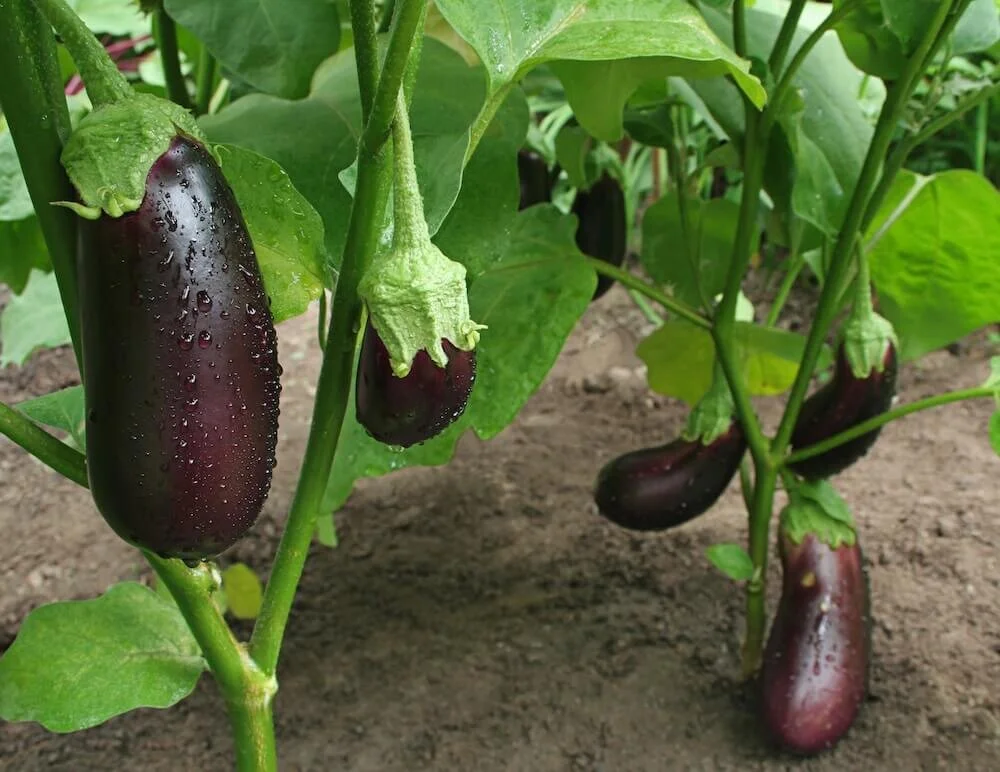Eggplant: Solanum melongena
The Eggplant
Solanum melongena
Solanaceae
If you only know eggplants from the large, black beauty variety used to make eggplant parmesan, and think you don’t like them, I’m here to tell you that you don’t know the eggplant. For starters, the eggplant isn’t a vegetable. Technically the eggplant is a berry (a berry is a fleshy fruit without a stone or pit produced from a single flower containing one ovary). There is still confusion as to where the eggplant originated from. Using DNA sequence data, some are now suggesting that the eggplant domestication arose from Africa, and that Solanum melongena may be related to the poisonous Solanum linnaeanum. Previously, it was suggested that eggplants were domesticated from the south and east Asian populations of Solanum incanum.
Solanum linnaeanum is more likely the progenitor of the modern eggplant (Solanum melongena).
The murky history of eggplant as a crop is buried deep in history, and we aren’t quite sure for how long it’s been that way. It has been cultivated in southern and eastern Asia since prehistory. In the United States, we have very little exposure to the diversity of species that comprise the eggplant, and how many ways they can be used.
Eggplants were grown throughout the Mediterranean area by the Arabs in the early Middle Ages, who introduced it to Spain in the 8th century. But like with all nightshades (plants in the Solanaceae family) for a long time many Europeans thought this plant was poisonous or that it caused insanity. The same was also said of the tomato. Some of that reaction was probably a racist reaction to a food that was introduced by the Arabs.
China grows more eggplant than anyone (about 60+% of the world’s eggplant production). India comes in second producing about a quarter of the world’s eggplants.
In Arizona eggplants are a warm-season crop. You can grow from seed or plant-start and plant out after the threat of frost is over. You can also get an early start if you protect young plants from any late frost but eggplants aren’t very happy being both cold and wet. They love heat. They will even produce fruits when tomatoes give up in the summer. They grow in full to part sun and are heavy feeders, so keep them fed, especially with phosphorus (the middle number on fertilizers). Most eggplants grow about a few feet tall and are self-supporting. A few may need some staking or tying up, but plants are not nearly as sprawly as tomato plants. Even the dark purple eggplants can turn orange when overly ripe. I think they are still edible at this stage, but perhaps not in their most flavorful state.
In the United States the most common variety is the giant globe eggplant types like Black Beauty or Florida Bush. These have a large spongy fruit. And while this classic eggplant (to Americans) is maligned by some, I don’t mind this one—it makes a great flavor sponge as most classically used in the aforementioned eggplant parmesan. The classic Italian varieties of eggplant are just slightly different, mostly just a bit smaller than the “American” eggplants but still purple and bell-shaped. If this was one’s only exposure to eggplants, you might not think too much of them.
Unless you are hitting the Asian markets, you might have never come upon the other delicious types of eggplant out there. A few have always been found in those markets, like the little lavender-colored Japanese ones, the tiny egg-shaped green and white Thai/Cambodian ones, or the white eggplants used in Chinese and Middle Eastern cuisine.
Thai eggplant
Some years ago Baker Creek Heirloom Seeds began introducing some very exotic eggplants to Americans—the heirloom seed originating from small places in Europe, Africa, and Asia.
The point is, they aren’t just large purple fruits in the shape of Grimace, the giant purple marketing character for McDonald’s. The name eggplant, after all, came from the original plants introduced to Europeans which were egg-shaped.
Turkish orange eggplant
Eggplants come in a wide variety of shapes, colors, and they are each used differently depending on the cuisine that uses each kind. The larger ones are spongy and absorb fats really well which draw out their flavor—fats are great vessels for flavor which is why we all love fat so much. Many of the smaller eggplants, once roasted, are sweet and delicious on their own. Many are cut up into chunks for stir-fries. Others are rendered into a mushy consistency and mixed into curries or bean dishes. Baba ghanoush (my personal favorite thing to do with eggplant) is made with roasted eggplant. The options are endless, so until you’ve tried more than just a few western eggplant dishes, don’t tell me you don’t like eggplant, because chances are, you just don’t know it.
Bakers Creek Heirloom Seeds has the most diversity of eggplant varieties that I know of. Etsy is also worth trying. For fresh fruits of more than just what is in the grocery store, try Grant-Stone Market or Lee Lee International Supermarket.






